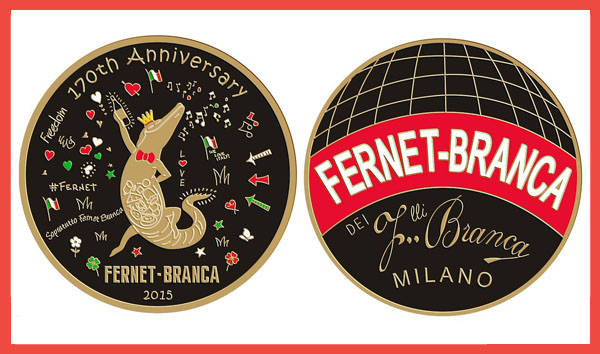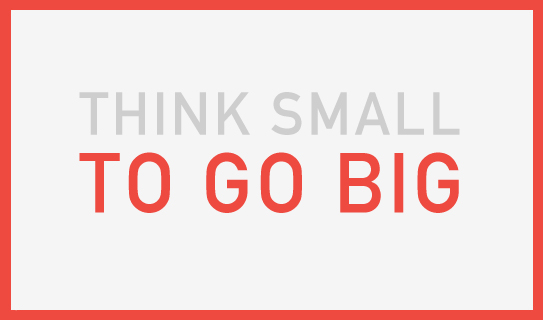Your Brand Launch: Brand Strategy
How To Share Your Brand’s Offering – Brilliant Brand Messaging Lessons From Acorns And Emojis
I entered a contest. Not a design competition, but a simple consumer contest.
And that matters because, really, who enters contests? We are all busy people. Especially a man in his early 40’s who is not bootstrapping his life, especially not aiming for a $20 gift card.* Well, I did, and here is why: While procrastinating – it happens to the best of us – in-between important and time-sensitive client workshop preparation tasks, the following E-Mail popped up in my ‘Everything Else’ area of my Inbox (yes, it accurately landed on the opposite side of my ‘Important’ E-Mails):
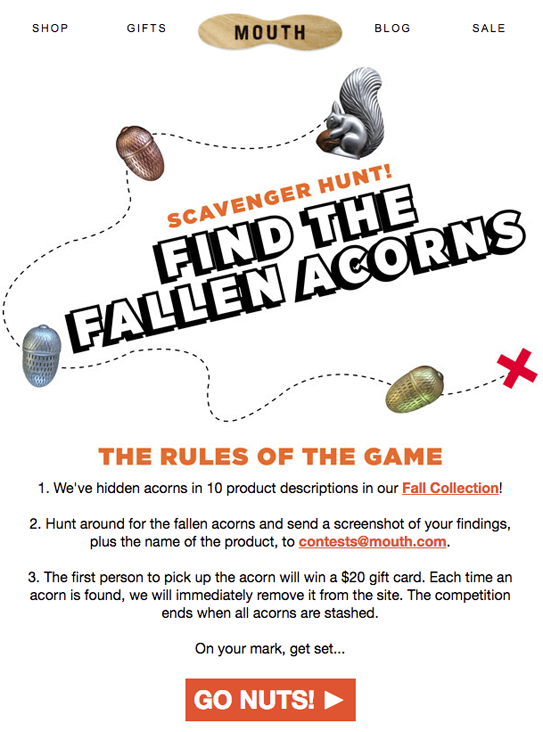
They got me with the squirrel.
And the time-sensitive part.
So, nuts I went.
I went nuts not to find that silly acorn, well that too, but over the genius, or the team of geniuses, who were briefed to get people to click-through their Fall Collection of indie food products. Instead of a beautiful collage of their products, or by cramming in as many different products as they can, they created a ‘fallen acorns scavenger hunt’ thereby ensuring people had to click through a lot of their new products thereby familiarizing themselves with a variety of offerings not unlike they would scrolling through an Instagram feed.
I did click on one product (‘brand research – had to make sure it worked before I wrote about it’) and saw an acorn. That’s when my brain switched from ‘marketing technique intrigue’ straight to ‘happy acorns hunt participant.’
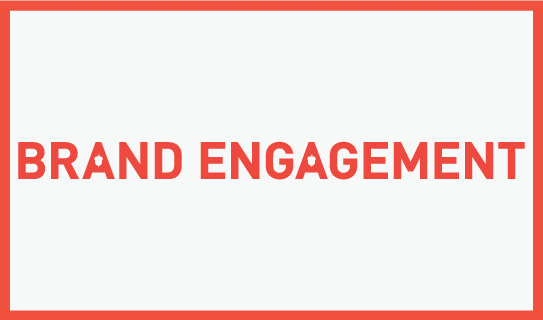
If you can get the E-Mail recipient who is the least-likely to partake in a contest, even less likely to engage in reviewing products he is not interested in purchasing at the time (but will likely recall once the holidays are rolling around) to click through your E-Mail and participate in your brand in the middle of a workday, you clearly did something very right.
Back in July, the San Francisco Museum of Modern Art (SFMOMA) launched their way of successfully distracting people from their work by asking them to text them an emoji. The service sends a related art piece of their vast collection in return of you texting ‘send me [insert any emoji, keyword or color of choice]’ to their number (572-51, if you are curious).
Here was my wife’s interaction at the time. I immediately tried it myself.
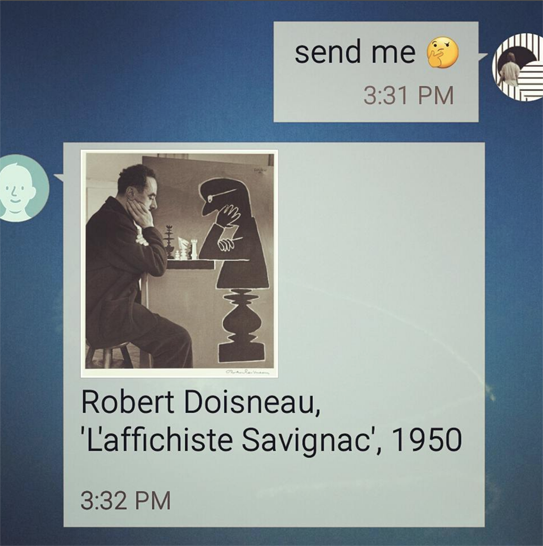
Intrigued? Of course.
You are not alone. In one single week they received – hold your breath – 2 million texts of people hungry to see art that was relevant to their current mood or personal interest. For the museum, it was an answer to the question ‘How do we get people to see all the art (95% of the collection) we simply can not show on the floors of our museum?’ What they got in return was so much more than interest in art. They created brand awareness, and brand love, (and collected millions of phone numbers) via a simple idea and an auto-reply powered by good data.
It’s time for us to gamify our brand experiences, especially the ones that are being sent via E-Mail to thousands of opted-in customers like it was the case in MOUTH’s acorn hunt example. E-mail has a median return on investment (ROI) of 122% – more than four times higher than other marketing formats, including social media, direct mail, and paid search. Combine that with an audience of hungry, active users that are ready to act, and yet you plug out one templated E-Mail promoting your product after another.
Stop.
Sit back and think about why the recipient would take action.
- Is it a question you provide a ‘must-know’ answer to?
- Is it an ‘act-now’ (and now only) deal?
- Is it a unique gamified experience?
- Is it triggering intrigue, or a feeling of exclusivity, that causes actions?
Send less. Think more. Gain real engagement.
Take a step back from your analytics tools, grab a few fellow team members, a conference room, and a highlighter and take over the good old whiteboard. Your ROI will soar and your brand will thank you for not being a spam brand, but an engaging brand.
Let’s thank a bunch of acorns and emojis for that.
*Side note to that acorns hunt E-Mail example: Getting a $20 gift card for a minimum $100 order, so a 20% Off Your Next Order ‘gift’ is a rather sad incentive (why not truly give $20 gift cards?) that can quickly turn potential fan excitement to immediate bummer brand reclusive. I noticed that after my hunt was over.
How The Narcissism of Prince Can Lead to Your (Next) Successful Brand Launch
I spend a fairly good amount of my professional life traveling the world for meetings, workshops, and lectures. My wife pities me for the early mornings, late nights, the anxiety, the unknown, the airports and the countless Uber rides. Me, on the flip side, I enjoy it thoroughly. I get to explore new cities and cultures and use the little bit of downtime I get to gain new experiences. I will always be a seeker. Just like a little boy, I am curious and still believe that the world is my oyster. It’s strange, but I firmly believe it works to my advantage as it fuels me with inspiration and, as a result, creates lasting memories.
This week brought me to Minneapolis to work with a Fortune 100 company on two brand launches, and this morning I used the time before my flight to take a ride out to the suburbs for a tour of Paisley Park. Not one of the city’s many beautiful parks, Paisley Park is the place Prince (‘The artist formerly known as,’ who passed away abruptly last April) created in order to write, record, party, host, meet and at times stay at, that is crafted precisely to only his needs and according to only his vision. I am not a ‘super fan’ by any means, but an admirer of his talent and felt like a visit to this ‘sacred’ place would make for a unique experience. And it sure did.
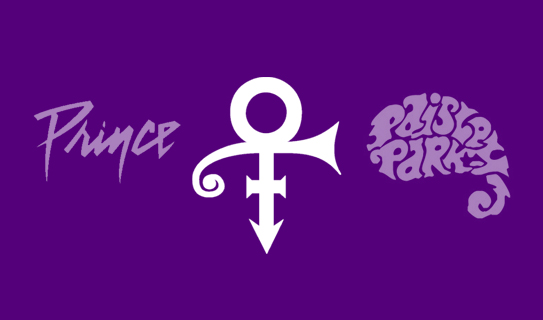
The ‘Prince,’ ‘Love Symbol #2,’ and ‘Paisley Park’ logos are all part of the Prince brand (owned by their respective trademark owners, shown for illustrative purposes only).
Besides being an amazing musician, dancer, singer and overall creative artist, Prince was also an overachiever, a perfectionist, and a narcissist. He was an entrepreneur extraordinaire and a meticulous brand creator.
At the end of an amazing tour through his digs – he dubbed it Paisley for the ever changing nature of paisley design patterns, a metaphor for his creativity, and Park for it being his playground – I left feeling equally moved and inspired. When on premise, Prince was found recording new material more often than doing anything else. Many nights of the week he had gatherings, many were free to attend for the ones ‘in the know.’ Some he unexpectedly popped in to perform a quick impromptu jam session for the few lucky people in attendance. Some were 3-plus hour long sets for 2,000 attendees in a full stadium-gig setting (Yes, this ‘park,’ his house, is ginormous). Most started between 1:00 and 2:00 AM. One night when he serenaded Madonna, who was in town for a tour stop, there were only 8 people in attendance. As our tour guide, Shawn, said, “I guess people have day jobs and 2:00 AM shows don’t fit too well into that routine.”
Prince’s recording studio was centered around a mike and a chair. He sat while singing because most of the times he was operating everything else all by himself, simultaneously. Guitar, piano, synths, you name it. When he walked into the entrance hall of Paisley Park, his eyes were looking down upon him from the ceiling in the form of a big painting.
He also created a room for each of his finished albums. There are, obviously, quite a lot of these rooms. Like shrines, these rooms are filled with video footage of concerts and interviews of that era, costumes he wore during that tour, specific instruments played, artwork for the album and tour, and walls covered floor to ceiling with images of him during that era. These rooms were not created for the museum, they were part of his living life. He walked by them every day he spent at Paisley Park.
You can only imagine the significance he saw in each project and the pressure he (not even thinking about the fans, critics, and record labels) put upon himself with any new project, knowing that ‘at its conclusion I will designate a room to it, which shall outlive me once this turns into a museum.’ The kind of attention to every project detail had to be meticulous: From concept, compositions, lyrics, artwork, theme, costumes, performance, production, band, dance moves to PR, the list goes on and on.
At the onset of your next new project, and may it be the first – your startup perhaps, envision that room Prince dedicated to each of his projects and ask yourself how the room for your project should look two years after successful launch:
-
Is it deserving of ‘a room’?
If not, how can you make it more deserving?
-
Will it be loved and admired by the ones you cater to?
If not, how can you create more empathy?
-
What is the unique experience?
If it lacks, go back to map the customer journey and create enough delight and ‘moments of memories’ along the way.
-
How does it fit into the house (of your brand, or brands, if applicable)?
If it doesn’t, maybe that is a pivot or a step into a new era, but ensure you can see past this step to plan for consistent growth and a unified future brand experience.
-
What lasting impact will it have?
Is that the impact you seek – is it impactful enough?
-
Does it push the company forward enough? Or in the case of a startup, does it push you towards your ‘true north’ vision for the brand?
If not, experiment more to push your industry’s boundaries.
You don’t have to be an obsessive, genius rock star in order to do that. Nor a narcissist. You just have to have enough foresight to envision, in order to connect, the dots. But you have to list out all those potential dots, and envisioning that room is one great way of doing so.
How will it look? Are you impressed?
Once you are, perhaps you should throw a brand release party – sounds so much better than a launch party now doesn’t it?
Applause will be a given, encores optional.
Suggested Tweet
How To Ensure Continuous Brand Affection As Your Tech Startup Approaches Financial Glory
[This article was originally published on Forbes on 04/07/17]
We’ve heard a lot about tech IPOs in recent weeks thanks to an instant picture-taking app from Venice Beach going public. Tech companies, some worth as much as small countries, leave many open questions for investors, users and brand managers alike.
As a brand strategist known for my work with tech startups, I was recently interviewed on CGTN on the topic of how these big evaluations and IPOs may negatively affect a brand and its loyal brand advocates:
In preparation for the show, I wrote down tips on how to deal with the associated brand risks for when your tech startup finally hits the jackpot. You never know: A merger, massive round of funding or even the mighty IPO might just happen to you next.
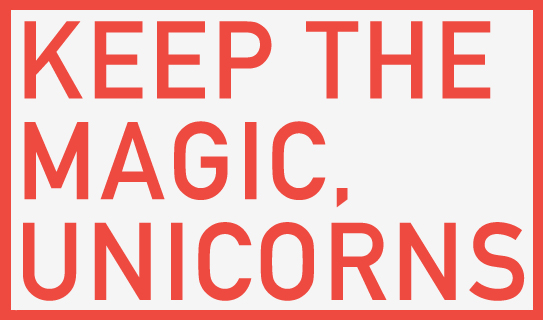
1. Show Your Users It’s Still About Them
Many consumers (or “users”) question high valuations, especially those of tech companies whose products they use on a daily basis. It is difficult to grasp the financial value in broader economic and strategic terms with tech companies that don’t show big profits, yet are worth billions of dollars. This often makes younger consumers belittle and ridicule apps they used to love. It changes perception.
On top of that, it happens that millennials, especially teenagers, are not known for being brand loyal. If they are your power users, communicate your shared values with them, because a billion-dollar valuation is likely not a value they will automatically cling on to. Now, they won’t delete your app unless the brand itself shows obvious signs of change, but once it does, then they’ll jump ship with the simple swipe of a fingertip.
Be ready to over communicate to your users during the time of IPO. Don’t solely focus on talking to the press. Instead, ensure your users hear from you in your proven and authentic tone. During these times of press storms, “surprise and delight” the ones who made you successful in the first place. They need to – and deserve to – hear from you.
When Google filed its IPO back in 2004, it integrated mathematical (aka “geek”) humor all the way into their filing papers. The value of the offering was equivalent to the mathematical constant e (2,718,281,828). It was a great way to be true to its brand aura even during this risky and otherwise very dry period, giving brand advocates buzz to share.
2. Reinstate And Reignite Your Company Culture
IPOs of young companies easily result in company culture breakdowns. With significant growth and financial backing often comes a hiring spree with leadership changes, added levels of management, and plenty of processes, not to mention the formation of a board of directors. This is the time of internal employee joy – and fear.
Now that the financial success is taken care of, go back in time and think about what type of company you wanted to create in the first place. Have you reached the goal of birthing your dream company, beyond in financial terms? What culture did you want to create? How did you want to inspire your staff? Write down those values at this very important moment in your brand’s history and have your marketing and communications team draft a plan to reinstate them into the company at this time of change. Understandably, during times of an IPO, they are all slammed and are already working overtime. That indeed makes this additional project even more important; they will thank you later.
Being a true brand that is met with admiration is all about trust and authenticity, both of which have to come from the top in order to trickle down from the brand to its users.
3. Don’t Instantaneously Disrupt The Experience You Meticulously Crafted Over Years
An app is both an extremely personal as well as an extremely emotional experience. Users focus on their own tasks and the app is mainly a facilitator in their lives, from booking a room, to taking a picture, to sharing their world with others in their circle. This personal experience is never about the company that created the app; it’s about the user and other users. An app is not a fashion brand that users wear like a badge of belonging; instead, most tech brands are functional extensions of daily lives and the user content a reflection of their own personalities.
The sudden press surrounding an IPO, a high evaluation, a huge financial investment boost or a merger will create a fear of change in their experience with the app and a fear of a change in the integrity of the brand. With money often comes corruption, or so your users have heard. Make sure they know where you are heading with the company and why all of this talk about a big financial boost will result in an even better personal experience for them.
How To Avoid Your Uber Brand Mishap
Ride-hailing app Uber had a rough couple of months, to say the least.
I for one have been an über Uber brand advocate from day one and have had a lot of defensive conversations (with cab drivers, my parents, and other naysayers alike) on behalf of the brand I so loved.
Loved, because there is love no more.
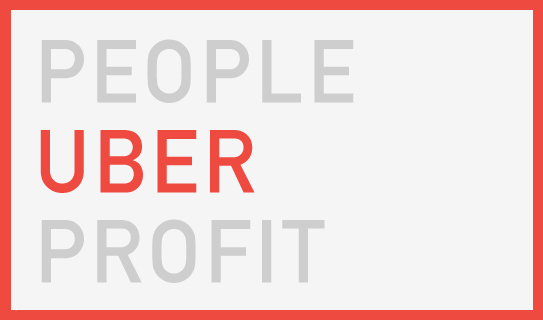
The other week, as I was on a flight to Austin to hold one of my many Resonaid brand foundation workshops with a startup, I was contacted by the Los Angeles Times on my thoughts about Uber’s brand troubles. I conducted the interview from the plane, which made me feel uber-productive (and quite special, I must admit), and was greeted by the following ginormous quote in the LA Times later that very same day:
One thing leads to the next and I was interviewed by Canadian TV station CBC the day upon my arrival back in L.A. on the same topic (you can read that story here). Now that I am rather well-versed on the subject of Uber brand bashing (*sigh*), I want us all to understand the one fundamental key branding lesson from their mishap so your startup can avoid following Uber’s path:
Uber came in to disrupt a commodity and monopoly service, the cab industry. Today it may be taking their place and share the same fate with the very companies that used to be the enemy. By focusing solely on the next round of funding and speedy economic growth, the company seems to have left behind what matters the most, what literally drives their business: People.
First, the people who actually make Uber a functional business model, its drivers. Continuously lowering of wages and surpassing employee laws turned into a burden for the early Uber drivers, the ones that actually loved the brand the most, as they are now being forced to leave Uber or work hours that may seem unsafe for drivers and passengers alike.
The effect this has on passengers has been noticeable over the past 6 months: The brand experience of a cool, novel, inexpensive service in nice cars with fun and educated young drivers that cared about making your ride enjoyable changed completely. Today, the only brand attribute left is ‘cheap’ and the Uber brand took a massive hit because of greed and a one-track mind that left the life force of a functioning company behind.
New ride-hailing services that care about more than simply profit (ranging from a company offering female drivers for female riders – to a nonprofit that pays its drivers well) will gain momentum quickly as the Uber brand perception is changing with scandals continuing to hit the mainstream press.
Uber may be getting disrupted by empathy.
The key takeaway for your startup is to never sway away too far from the one key brand rule Uber broke by their single-minded product rather than brand focus:
People first and profit will follow.
How To Go From Brand Affection To Product Sales In 2.2 Seconds
Everyone is preaching not to be ‘salesy.‘ It became a holy rule of marketing: Brands, earn your trust, then quietly suggest your latest products. Funny how that works, or rather how it does not work, as brands have been so hit over their heads by that ‘don’t be salesy’ mantra that they forgot to actually sell products once brand trust has been earned.

We write February 2nd, the day I paid a good amount of money to partake in the Porsche Experience Center. It was there I learned that it takes 2.2 seconds for the 2014 Porsche Spyder to go from 0-60 mph (in case you were wondering where my ‘clickbaitish’ blog post title was derived from). Not that I am into race cars nor that the Porsche brand gets my heart pounding. No, Porsche opened this race track close to where I live and being fascinated by brand experiences (and being known for enjoying higher speeds) I figured I should get my adrenaline going by racing a Porsche 911 Targa 4S (to be brand-correct) around a track, spinning it in a circle on a wet surface at full throttle and sliding uncontrollably through black ice; all while a professional (a ‘Porsche Drive Coach’) was sitting next to me praying for his dear life, as he should. That, after all, is what I paid him for.
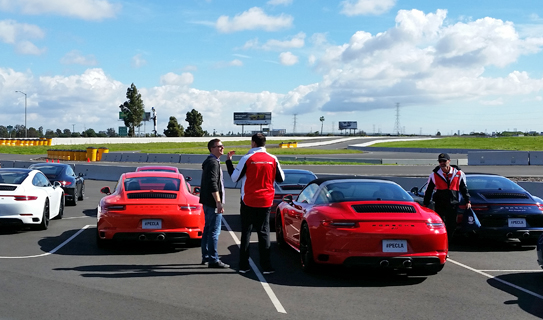
Pictured: Me and my ‘Porsche Drive Coach’ before the fun began
As was to be expected, I got fully engulfed in the Porsche brand from the moment I stepped into the facilities: While usually exiting through the gift shop, here you spend most of your time in it as it serves as the bridge to the ‘Speedster Café’ with its popular outside terrace where one can watch the cars zip on by and start one’s own experience. From Porsche exhaust speaker systems, Porsche office chairs, Porsche cookie stamps ($39, in case you fancy some) to GT3 rear spoiler book shelves, the imagination for branded products seemed endless. In the main entrance hall one can check out vintage Porsches and the actual race cars driven to victories during important historic contests. All Porsche, all the way.
After hitting the pedal for 90 minutes, exhilarated by the driving and brand experience, we took a seat at the fine dining restaurant, named ‘917,’ where we quickly got served some bread and 911 butter. Wait, what? Yes indeed, here is the 911 butter, and it was rather tasty:
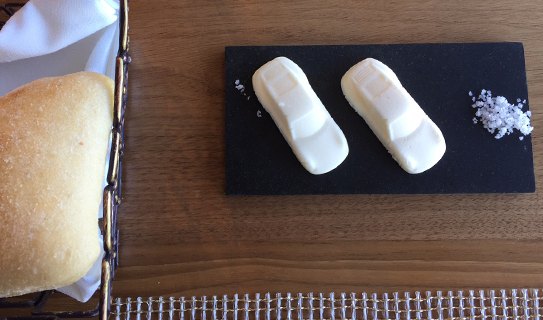
Pictured: Porsche 911 Butter
As I sat there breaking bread with the Porsche brand I told my wife something that would have made the Brand Manager cringe: “You know, despite how awesome this was, and how I am getting brainwashed by the brand and loving every second of it, I still do not feel an urge to ever own a Porsche. Why is that?”
Here is why, and it is a global marketing and branding disease I see all across the brand landscape: We show off our overall brand aura while potential customers are leaving trade shows and flagship stores empty-handed because we miss out on making it personal and relatable. If you are a high-end brand like Porsche that charges for a brand experience, one comes to understand that you do not want to come across as being ‘salesy,’ yet from the minute I stepped into the experience I was offered brand tchotchkes and branded butter. Why not go all the way and capture my emotions by transforming a well-crafted dream of a powerful brand into something that can become my reality: Show me the car options, show me the e-hybrid, the technology and the things that I care about now that I got re-assured by your great brand image and legacy, and I felt how much fun it was to drive your cars.
Brands, if we have an actively engaged and fully ‘brandwashed’ potential customer, please, for crying out loud, let’s craft a dream of ownership, not a bubble of a brand ethos that will burst the minute (s)he is not fully engaged anymore. Let’s see how our product could fit into their world – outside of our world.
Any brand, may it be a Porsche or a startup, needs to be sensitive to crafting experiences that tell a story; a story that fits into a unique individual’s life. Like therapy, let the consumer do the talking, but ensure you deliver the platform and take the steps to listen. Follow the ‘here is our most amazing product’ with ‘…and here are products that would work for your individual needs.’ Don’t sell a brand mythos alone, make them experience their own personal benefits first hand.
When I came home after my day at the race tracks, I immediately went to the Audi website to ensure they still sell the model I am currently driving, just to feel a bit of reassurance as my lease will be coming to a close soon. And I will drive that Audi as if it was a Porsche, now that I learned how to hit the pedal the right way. Thanks for that, Porsche.
As to you startups, find your engaged target and be salesy; it won’t hurt your brand, but it might just make a new customer happy.
When Something Isn’t Broke, Fix It: Restarting Your Brand At Its Height
This article was originally published on Forbes on 10/20/16.
Do you know that feeling when you are so inspired by something that you’re left speechless, puzzled and somewhat confused? Perhaps you’ve experienced it from a natural wonder, an incredible speech, a mind-blowing innovation you read about, or simply something your newborn does. Well, I had that moment while watching Netflix.
I know that sounds peculiar, but when I watched the first episode of Netflix’s second season of “Chef’s Table,” the show that dives deep into a specific renowned chef’s way of thinking, it took me a day or so to sort everything I learned into nuggets of insight. The episode starred American superstar chef Grant Achatz. But it wasn’t the balloon cheese dessert, the fact that he overcame cancer (stage 4 squamous cell carcinoma of the mouth) and was known for years as “the chef who couldn’t taste,” or his quest to reinvent meals daily that inspired me. It was his relentless creative drive that left me speechless.
His quest to transform something (food, in his case) into an emotional experience is remarkable; this is also why I do what I do at my brand consultancy. When I work with startup entrepreneurs on deriving their new venture’s philosophy and shaping their brand’s strategy, voice and image, triggering emotions is key to this journey – and to my own overall personal happiness.
The fact that Achatz would have considered his first restaurant a failure unless it would quickly turn into one of the very best in the country (it achieved that goal, being named the second best in the U.S.) was insane – insane in an inspiring way. What really struck me though was the fact that at the height of his restaurant’s success, he decided to close it and reinvent it from the ground up with new interiors and a completely new menu. For a three-star Michelin restaurant, that is as risky of a business move as there is. Digesting this indisputably progressive way of thinking, and translating it to other brands, got me excited.

Who else would a brand reinvention this sudden and complete apply to? And why? To find out, I pose a few questions that will help guide you down the path of boldly diving into ice cold branding waters, in case that disruption applies to your business.
1. What Is Your Brand’s DNA?
Knowing what your brand stands for, its single most important objective, and the values that are at the core of it are the most crucial ingredients of branding, ones that I spend ample time crafting with my clients. If that DNA of your brand ends up being best described by the word “innovation,” you are intrinsically forced to implement that thinking across the board.
If that drive for change and reinvention also drives you as the founder, you can not sit back and put success on autopilot. You must constantly go back and rethink, “How would you do this from scratch today?” If the house were to burn down today, figuratively speaking, how would you piece it back together? Likely, you would not literally piece it back together. Instead, you would rethink its purpose, location and foundation from the ground up and opportunities would pile up in front of you.
2. What Is Hiding Behind The Outward-Facing Success Of Your Brand?
No one is perfect and no brand is purely a glimmering success. You know it and I know it: There’s baggage hidden in the drawers of every operation.
Creating a list of even the smallest things that require fixing may soon turn into a notebook full of ideas and opportunities. These may turn a call for complete reinvention into an outcry for action; action to turn into the best your brand could possibly be. If you hear that inner call, you can’t forget it.
3. Is Another Brand Too Close For Comfort?
Are there startups that are knocking on your industry’s door? Competitors that are racing to take your place? The likelihood of this answer being “yes” is high, but I encounter two types of entrepreneurs: The ones who proactively act upon that knock on the door and the ones who push forward, resting on their share of the market.
In Achatz’s case, the knock came from another Chicago restaurant that just earned a three-star Michelin rating, giving him a local head-to-head competitor for the very first time. That was enough to make him act upon it.
When you see the first signs of competitors racing to take your place, it may be best to completely switch course. That is, “when everybody zigs, zag,” as author Marty Neumeier advises companies do in order to outsmart their competitors by taking a bold move to differentiate.
4. Do You Wake Up With The “Now What” Syndrome?
Many successful founders secretly wish they would not have been quite as successful with their first venture, as they sometimes feel trapped by the success they have created. They build their company into a comfortable and successful venture, then they don’t see a way out while they have many other entrepreneurial passions and ideas. Hiring another CEO feels daunting.
Most of the time it is solely the founders who are imposing that limitation on themselves. If you are one of them and you have many thoughts that would answer the question “now what?” a brand revamp might not only outsmart your competitors, surprise and delight your customers, but also reinvigorate your own life. That is something that should be on top of your list at all times.
Congratulations on your brand’s success – now please start over.
Crazy? Perhaps.
A genius move for the right type of entrepreneur and brand? Most definitely.
Public Relations And Brand Overlap Far More Than You Think
This article was written by Rebekah Iliff and was originally published by Forbes on 09/01/16.
In below article, Rebekah Iliff, Chief Strategy Officer at AirPR, discusses the intersection of branding and PR; an intersection too obvious to ignore, yet one that remains ignored too often. With her permission, and as my book is being referenced throughout (well, thank you!), I now like to share her thoughts with the readers of The New Brand Post. It goes something like this:
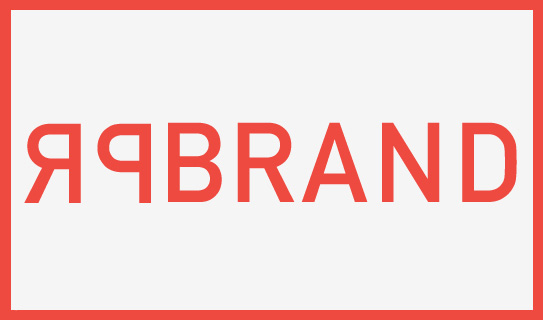
Without intending to, a company’s departments sometimes end up working in ineffective silos. A tech team without communications professionals can’t shed light on their achievements uber-effectively. An innovative ASMR advertising campaign can’t get many kudos without public relations, and the news of a rebrand can’t spread as fast organically as it can with media outreach. Stitching together cross-functional teams leads to greater innovation and opportunity.
At the same time, there’s a bit of a stigma about bringing too many cooks into the kitchen. Does your art director really need to help approve the imagery you’re sending to a journalist? Does your public relations department really need to know if the copy team is writing a spur-of-the-moment April Fool’s Day display ad before it goes live? In both situations, the answer is yes.
It may take longer to loop in other teams, but it’s worth it. Which brings us to two teams that frequently overlap without many people realizing it: public relations and brand strategy. These teams are often severed from contact, even though it’s paramount that they work together. Together, they are more effective, as both teams deal with messaging, public perception and customer touch points.
Fabian Geyrhalter, Principal and Founder of Los Angeles-based design and branding agency FINIEN, recently released the second edition of How to Launch a Brand, which covers everything from brand positioning and naming to brand identity. He’s launched more than 50 brands – large and small – and knows that brand strategy is more effective when it’s backed by an integrated PR and communications plan. Here are three ways public relations and brand strategy teams are related and why it’s important, according to Geyrhalter, a fellow Forbes Agency Council member.
1. PR and brand teams both focus scrupulously on messaging penetration
While copywriters, often living on branding or creative teams, work to align copy with a brand’s voice guidelines, public relations teams align messaging with a brand’s key ideas. In that sense, branding/creative and PR teams are the two wings holding a company accountable for what it communicates to the public, from board members to customers and journalists.
“Consumers respond to brands that have a coherent and straightforward message,” Geyrhalter writes in his book. “Equally important to your message is selecting a distinctive voice and persona for your company. The audience demands authenticity, and your brand’s voice must be authentic and transparent.”
As an executive at a PR tech company, I see Fitbit as a successful brand that has these teams in coordination. Think about Fitbit’s brand voice: It’s clear, concise, encouraging and motivational. If copywriting contradicts the foundational messaging a PR team is using, misalignment occurs and it can chip away at credibility long term. Imagine if Fitbit sent you a marketing email encouraging you to get a few extra thousand steps in today, while its CEO was quoted in a popular health magazine saying steps don’t matter, only calories. Customers may not notice, but journalists likely would; “misaligned” isn’t a way you want your brand to be perceived.
2. Public perception is jointly owned by public relations and brand
While copywriting and graphic designers and/or UX design control public perception of a brand from a customer standpoint, public relations and communications teams control public perception from the standpoint of investors, board members, influencers (from journalists and analysts to bloggers), and more.
It’s like the two sides of a vanity mirror. On the magnified side, PR people share intricate details with the press who view brands under a microscope. The other side shows a clear, customer-facing view of said brand. Both are needed in order to properly display your “face.”
3. Branding and public relations both pivot upon personas and personalities
Both branding and public relations teams give companies real, human faces through characters and spokespeople, some of whom are real employees, some of whom are figments of our imaginations.
“Characters give the audience someone to root for and follow,” writes Geyrhalter, referencing Mr. Clean, Virgin’s Richard Branson, and Dos Equis’ “Most Interesting Man in the World” as personalities that have garnered impressive followings.
Natural foods brand Kashi is another example Geyrhalter mentions in his book. Kashi has taken a different approach in leveraging its real employees as brand ambassadors, showcasing how its actual team members live and breathe the Kashi lifestyle.
“Thinking of your brand as a person will help you create an authentic voice that will connect with consumers,” writes Geyrhalter. He suggests writing a list of adjectives that describe your brand or writing a faux obituary that includes a list of life accomplishments to better illustrate these personas. How would the brand persona be remembered?
In public relations and communications, real spokespeople – from CEOs who can speak to high-level strategy to CFOs who can talk publicly about financial matters such as an IPO behind a brand are what the public and journalists want (versus boilerplate messaging penned by a PR professional).
Next time you’re poised to launch a PR campaign, perhaps take a moment to ask yourself if the brand is represented fully in every aspect of your company’s outward facing narrative. In other words, are you certain that brand and communications are effectively working together?
How To Launch A Brand: Lose The Ego, Gain A Soul
This interview with Fabian Geyrhalter, Principal of FINIEN, was originally published in The Huffington Post 07/15/16.
Chances are, if you’re a startup or a small business, at some point you’ve asked yourself: “How do I effectively launch my brand?”
While there are quite literally hundreds if not thousands of ways to get the word out these days, the truth is, unless you have a solid foundation from which to launch, your company could very well end up face-down on the pavement. In other words, if your brand lacks the necessary qualities to attract and retain loyal customers you may need to rethink your strategy.
As someone who constantly thinks about these things, I thought it would be fun to sit down with my friend and branding-savant, Fabian Geyrhalter, Founder and Principal of FINIEN. His Los Angeles-based consultancy specializes in turning ventures into booming brands. I’ve had a front row seat to his genius over the last few years, and watched brands he’s advised go from “zero to hero” in a very short period of time. Some have become market leaders, while others have sold to huge companies. Although his branding prowess wasn’t the only factor in these successes, I have no doubt it played an important role.
So whether you’re looking to refresh a brand you dreamt up three years ago or are starting from scratch without a website your business can call home, listen closely to what Fabian G. has to say. Here, I pick his brain on all things branding, positioning, and what you need to be successful in today’s digital world.
P.S. – He recently released the second edition of “How to Launch a Brand”, a step-by-step guide to crafting a brand, from positioning to naming and brand identity. It’s, pretty much, a must-read for anyone developing their own brand (which is basically everyone when you think about it, given how personal branding plays into individual’s professional careers today).
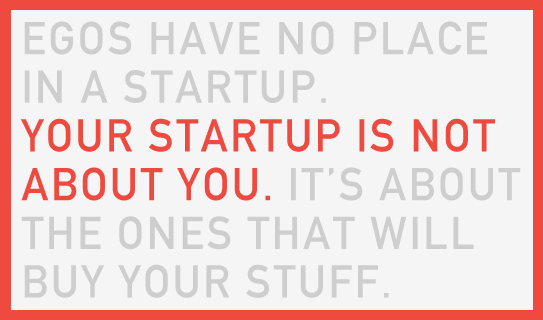
Rebekah Iliff: How many startup brands/companies have you worked with over the last several years?
Fabian Geyrhalter: In the last 3 years perhaps 50, in different capacities. The diversity in the brands we help launch is really what gets me up in the morning and why I dedicate my professional life to doing what I am doing. We helped craft a croatian underwear brand, a workers comp insurance disruptor, a VR brand, a winery, and then of course the expected fair share of apps.
What is most exciting is getting our heads into the minds of these highly diverse consumers and users and diving into the soul of these brands and connecting the two. Most founders are too close to their product, they built a tall wall between themselves and their product and the other side, the one that is so important, the consumer. It is usually mainly psychological – they have not moved an inch from their screens, so they are a bit disconnected from the ones using the product. I talked to a tech startup that worked on a product for moms and their toddlers. I asked them how much time they spent having coffee with moms or playing with toddlers. I received a deer in the headlights stare back. It was awkward; mainly for them.
RI: Why is it important for companies to think of their brands as having a Soul?
FG: A product that competes on price and features alone can never become a brand. A company that has soul does not need to compete on price; ever. Soul is what connects a product or service to a human’s emotion; a soul searches for a soul. We buy Patagonia and TOMS for a reason, and it’s not because of their product.
RI: What other brands do you think have a soul and why?
FG: Yes, there are the Patagonias and TOMS, but there are many startup brands that do it very well also. One I love to cite is Shinola. Born out of necessity and belief, the brand is fueled by authenticity and it found a great voice for itself that directly sparks emotion with their audience. I just spent $280 on a Shinola wallet last week. I did not think once of cross-comparison shopping. It just felt right. It was an all-brand purchase, solely emotional.
When that happens with a very young brand, then you know someone’s done their homework upfront when crafting a brand.
Another example would be Topgolf who realized that if they focus deeply on the target audience they would find the holy grail to generate revenue as a golf startup in a landscape where golf is known to be on the way out, not being able to connect with millennials. Topgolf created spaces to hang out, guys have craft beer and watch the games, ladies can wear high heels and sip cosmos, and everyone can enjoy instagram-happy lighting – and golf is something that happens in the background. They must have looked at bowling and realized that it’s a perfect recipe to get kids to start liking an ‘old’ sport again. It’s about them – and about socializing, in a way that works particularly well for that new audience. That is soul: soul searching in order for souls to connect.
RI: There has been a shift to brands focusing on “Purpose.” What’s the easiest way to incorporate Purpose into your brand, even if you’re a young company?
FG: The easiest way is to look at what your brand stands for, what is the WHY behind your brand: Why does it matter to have this product in this world at this point in time and for the long term and why will your audience deeply care? There is an intersection that will point towards a social cause that can be utilized in an authentic way to manifest that the purpose of the product/service goes deeper than generating sales. That is the easiest way since you asked for that; one that over the past 5 years has become somewhat of a staple for startups founded by millennials as ‘purpose’ is already ingrained in their thinking: “We don’t work for money alone, money is a necessity but not the reason why we are going into the workforce.” Multiply that by ten when they start a business on their own where the sky’s the limit, and the true north is up to their imagination.
In times of great political fear and danger, this generation of entrepreneurs is a shining star on the horizon, and I am grateful to be able to spend my days working with inspired, soulful people like that.
RI: In your book, you talk about Brands that have successfully made people an important part of their strategy. What is the advantage of doing this, over simply having a brand like Coca-Cola without a person attached to it.
FG: It’s a very strategic move that I discuss in my initial workshop with founders: How far do you want to, need to, or should you be the brand as a person? There is a clear danger to have a person be too closely tied to a brand, as was the case with American Apparel when things go sour, or it could simply hinder a smooth exit strategy. Most often founders are deeply tied with their brands.
The extreme is a Richard Branson, but on the other side of the spectrum you have a John Mackey (of Whole Foods), who only people in the business community know, despite him being the brand as a person. Ultimately, you can be the brand as a person in different ways. Many of my clients have several people that speak on behalf of the company. One faces the public as the creative force, the other as the business force, etc.
Rule of thumb is don’t name your business after yourself and don’t promote yourself more than your product, unless you are a consultant and you defacto are your business.
Even when I talked to a young and rising fashion designer I advised her to steer away from using her name and amplifying her image as part of the brand, even though we all know she is the sole designer. More often than not it causes brand turmoil down the line and is sparked mainly by ego, and believe it or not, egos have no place in a startup. Your startup is not about you, it’s about them – the ones that will buy your stuff. Think of them, think like them, don’t think about yourself.
RI: Why do you think so many early stage companies skip the Brand aspect of the process?
FG: One part lack of knowledge and understanding, one part negligence. Shake it in a speed-to-market way and top it off with self-funding and you have the Anti-Branding cocktail. It has a bitter after taste, guaranteed.
And this really is the reason why I wrote “How to Launch a Brand”. I wanted to create awareness and provide a step-by-step process. Affordability is not money alone, it’s also time. They can take an hour and a half and read the book and be aware and educated, or take a day and work through the workbook edition and get a lot of the important brand thinking done themselves. Some things they can do for themselves, some things (like creating the logo) they should leave to professionals, but even if they just listen to the 2.5 hours of the audiobook, at least they have a great understanding of the process and of the issues that can occur, steps not to miss and what to do at what time in the process.
I tell tech startups that branding is the first feature to which their audience will ever be exposed. That usually is a wake-up call.
RI: What do you think is a fair investment in terms of what an early-stage company should be spending on branding? For a resource-constrained startup, what makes sense?
FG: Early stage is such a loose term in this soon-to-come-bubble, but if they are working on a startup that they know they will invest a few years into and they will launch in a serious manner, they have to put aside a marketing budget and 40k should be the minimum to be allocated to crafting a meaningful brand strategy, name, voice and overall identity. For bootstrapped startups it can now be cut to $34.95 for the workbook I just released. Wink wink.
RI: Can you measure the ROI of a well-developed Brand?
FG: If six months after launch you have loyal followers, you have a tribe that posts for you in social media, that wears your pins and sports your logo, then you can definitely say that the investment into branding was well worth it. If you land a major investment because of the story and the professional deck and the amazing design from the inside (app/product) out (logo/site), then you should allocate a fair share to branding as well.
If your brand goes viral six days after launch because your name offends an entire country, people talk more about how weird your logo is than about your actual offering and if the few people within your target group, whom you force to look at your site don’t get what you do and why they should connect to it at all, then you most likely should point a finger (a specific finger) towards the brand folks.
